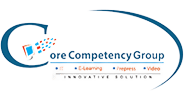Why Learner-Centered Design is Essential for Employee Engagement
Rohit Kumar
13 Dec, 2024

In today's corporate landscape, the importance of an effective learning strategy cannot be overdrawn. Companies are no longer merely interested in imparting knowledge. They seek to create learning experiences that engage employees and foster meaningful behavioral changes.
This shift has given rise to the learner-centered approach. This method places the learner's experience at the core of the educational process, ensuring that every aspect of the training is designed to meet the individual's unique needs.
A learner-centered approach is fundamentally different from traditional content-based instructional design. Instead of solely delivering information, this approach emphasizes creating relevant, engaging, and personalized learning experiences.
By considering the learner's context, prior knowledge, and personal learning style, the approach makes learning more accessible and impactful. It acknowledges that each learner brings a unique set of experiences to the table, and these experiences must be respected and built upon to achieve profound, meaningful learning outcomes.
The principles of a learner-centered approach are rooted in personalization and engagement. Learners are encouraged to connect new information with their existing knowledge, engage in social learning through discussions and collaborations, and take ownership of their learning journey.
Context
Context is the cornerstone of a learner-centered approach. It emphasizes making learning content relevant to the learner's real-world experiences. This principle is particularly vital in corporate settings where employees are more likely to absorb and apply knowledge directly related to their roles.
Construction
The construction principle involves helping learners build new knowledge based on their experiences. Instead of treating learners as blank slates, a learner-centered approach recognizes that each individual brings prior knowledge & experiences that can be used to deepen their understanding of new concepts.
Conversation
A learner-centered approach encourages dialogue between learners and instructors and among peers. These interactions facilitate deeper understanding by allowing learners to discuss, question, and explore new ideas in a collaborative environment.
This principle is fundamental in corporate training, where employees can benefit from shared insights and collective problem-solving.
Collaboration
Collaboration involves working together to achieve learning objectives. Learners are encouraged to collaborate with others, which helps them refine their ideas and gain new perspectives.
By promoting collaboration, companies can create a learning environment where employees learn from the content and each other, leading to a more dynamic and engaged workforce.
Implementing a Learner-Centered Design Approach Here are some best practices to successfully implement a learner-centered design approach in your organization.
1. Identify Your Target Audience
The first step in implementing a learner-centered approach is thoroughly understanding your target audience. This process involves gaining deep insights into their needs, challenges, learning preferences, and work environment.
Conduct surveys, interviews, & focus groups to gather data on your employees' needs to succeed. Understanding your audience at this granular level allows you to tailor the learning experience to be more relevant and engaging, ensuring the training resonates with each learner.
2. Conduct a Training Needs Analysis
After identifying your target audience, your next step is conducting a comprehensive training needs analysis. This process involves assessing the skills, knowledge, and competencies your learners need to develop.
Rather than adopting a generic training program, focus on pinpointing the specific gaps within your workforce. A well-conducted training needs analysis will help you define clear learning objectives aligning with individual learner needs and broader organizational goals.
3. Simplify and Streamline Content
One of the common pitfalls in corporate training is overloading learners with too much information, which can lead to cognitive overload and disengagement.
To avoid this, carefully curate the content to include only what is essential for the learner's role and current learning objectives. Break down the complex concepts into bite-sized modules that are easy to digest and apply.
4. Respect the Cognitive Load
Learners can only absorb and process limited information at any given time. Respecting your audience's cognitive load is essential to maximizing learning retention and effectiveness.
Use clear, concise language, and avoid overloading your courses with excessive multimedia elements like animations and graphics unless they directly enhance understanding. Provide learners with options to control the pace of their learning, like the ability to pause, rewind, or skip content.
5. Empower Learners with Autonomy
Empower your employees by offering them choices when engaging with the material. This could include allowing them to select topics of interest, choose from various learning paths, or decide how they progress through the content.
Providing opportunities for self-assessment, reflection, and practice further reinforces this autonomy. By trusting learners to take ownership of their development, you increase their motivation and engagement, which leads to better learning outcomes.
6. Incorporate Continuous Feedback and Iteration
Encourage learners to deliver feedback on the relevance, effectiveness, and usability of the training materials. Use this feedback to improve your training programs, ensuring they align with learner needs and organizational goals.
Additionally, data analytics can provide insights into how trainees interact with the content, helping you identify areas for enhancement.
Conclusion
Incorporating a learner-centered design into your organization's training strategy is fundamentally rethinking how your employees learn, grow, and contribute to your company's success.
This approach demands careful consideration of each learner's unique needs and experiences, aligning training content with real-world applications, and promoting an environment where continuous learning is encouraged and ingrained in your company culture.




